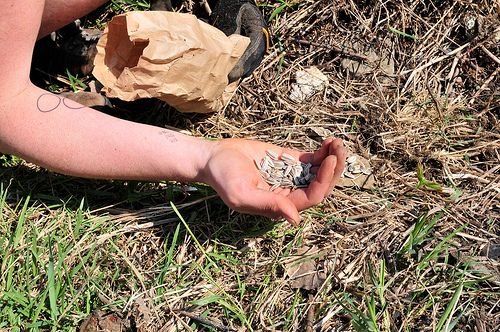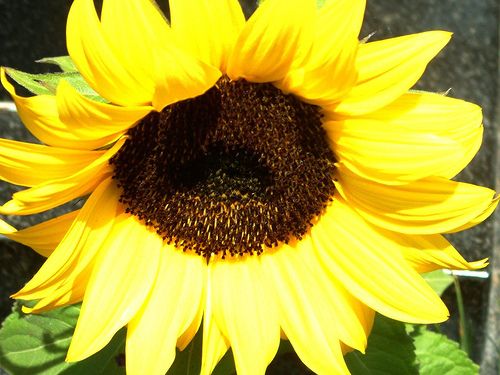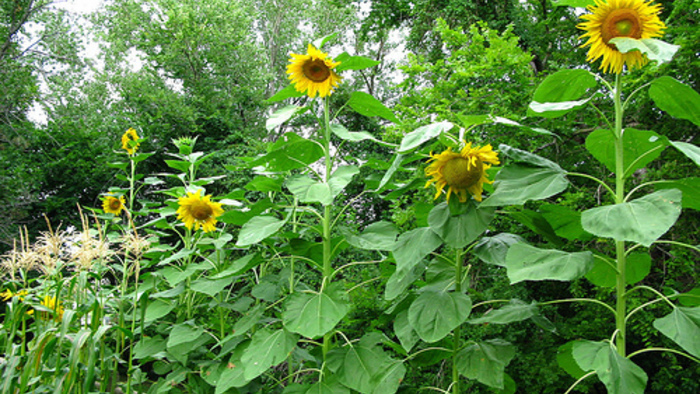
May 1st is the official Sunflower Guerrilla Gardening Day and appropriately on a sun-day. I’m already revving my engines by scoping out the best places in my city to create acts of random beauty. And the sunflowers are only the beginning. Guerrilla Gardening can be done with not only shrubs and “pretty” plants, but with vegetables, as well.
Guerrilla gardening began when Richard Reynolds began what he describes as his “illicit cultivation” around London. Looking for places of neglect and the occasional empty concrete planter, he got to work turning the neglected and drab areas into spaces of beauty or food. During the night hours, the guerillas would gather their plants, seeds, shovels, and water containers and work their magic. And the early morning light would show off the amazing transformation to passersby.
Wikipedia defines guerilla gardening as:
“gardening on another person’s land without permission. The land that is guerrilla gardened is usually abandoned or neglected by its legal owner and the guerrilla gardeners take it over (“squat”) to grow plants. Guerrilla gardeners believe in re-considering land ownership in order to reclaim land from perceived neglect or misuse and assign a new purpose to it.”
Personally, I don’t find it at all amazing that the practice caught on like wildfire. Just the image of these kids performing horticultural graffiti in the middle of the night to avoid confrontation with the naysayers (and probably the law), makes you feel downright giddy.
Because traditionally the guerilla strategy tends to ask for forgiveness as opposed to permission, realistically guerrilla gardening is indulging in a bit of the naughty. But this narrow definition doesn’t have to be the full story.
Staying on Just This Side of The Law
It’s entirely possible to guerrilla garden in spaces where this “random act of beautification” will not only be accepted – but applauded. You can start by looking for ignored hell strips (the little plot of earth that’s located between the sidewalk and the street) and asking the homeowner if you can beautify it.
Places with high public traffic make the most sense because that’s where the improved view will be the most noticed and welcomed. Look for places that aren’t being developed and those with natural water run-of. Neglected public spaces are your best bet for guerrilla gardening, but I wouldn’t rule out private property.
Whether you’re asking the owner of private property be sure to mention that you’ll be planting drought-tolerant plants (when established), or offer to plant native species. Assure them that invasive species are never even considered for guerrilla gardening. College campuses are good candidates and you’ll more than likely glean some extra guerrillas if you chose a site there.
Even though I only participate in legal guerrilla gardening, I still prefer to do so in the cover of night. It’s a part of the traditional rituals that I like to keep alive. Plus, it gives the process that edginess that belonged to the early guerilla gardeners.
*Good to Note: The sunflowers that are planted on Sunflower Guerrilla Gardening Day are a native species. If you’re going to use the plant-and-forget it method as opposed to planting a vegetable garden, native species are a great way to go.



















Comments
Log in or create an account to post a comment.
Sign up Log in